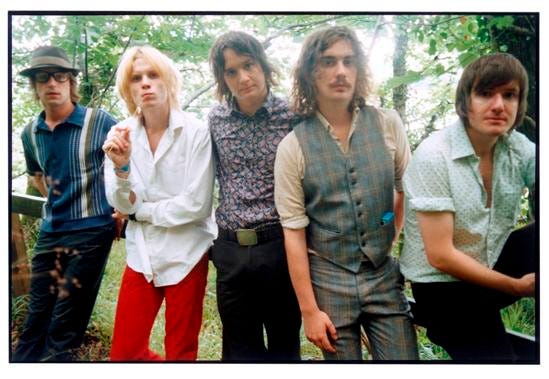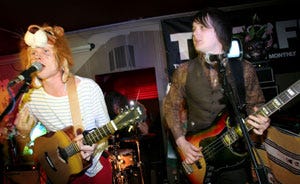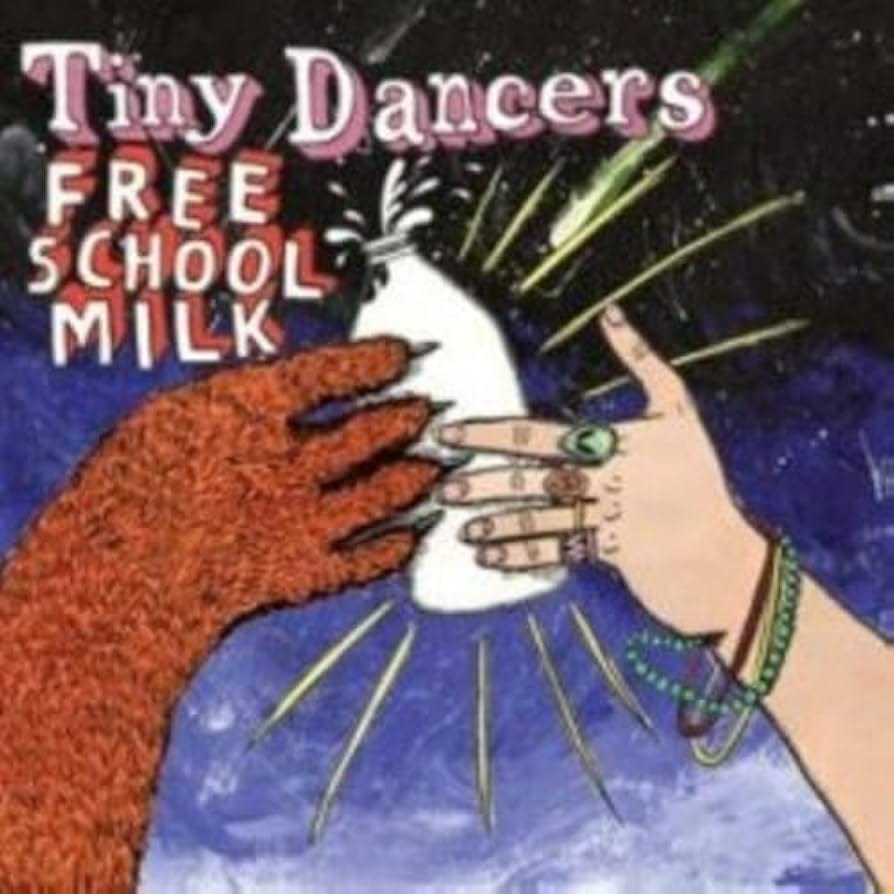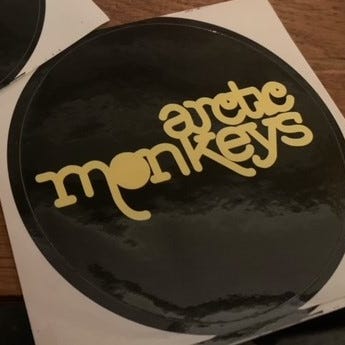The Curious Case of Tiny Dancers
Now that I've cut down my manuscript, I can share certain excerpts that didn't quite fit. This one features the band, Tiny Dancers. Another Yorkshire band that came too late for the New Yorkshire Wave
If you wanted an example of how wild the music industry got in the mid-2000s, then a case in point is the band, Tiny Dancers. If they’d have arrived a few years earlier, they could have maintained a healthy career. However, they came in at arguably the best and worst time, depending on your perspective.
Getting The Timing Just Right
There was, understandably, a thought that Yorkshire bands were so in vogue when Arctic Monkeys broke through that various bands around that time were swiftly offered deals. Without that interest, there’s some doubt as to whether certain bands would have landed a record deal at all. Indeed, Little Man Tate’s lead-singer, Jon Windle, even suggested that it’s unlikely the band would have been signed had it not been for Arctic Monkeys and the spotlight they generated in the local band scene.
In our interview, he told me that; ‘That focus on Sheffield was created at that time by the buzz around the Arctic Monkeys is the reason why we ever got anywhere at that level. Just in the fact that we were in that Sheffield bubble. I don't think we were special enough to have attracted the interest that we got if it hadn't been for Arctic Monkeys attracting people to find out what else was out there.’
There also remains a theory that some bands simply arrive at the wrong time. There’s the example of the Sheffield band Hoggboy who came in just in time for the garage-rock backlash around 2001. Deemed too arrogant and difficult for the music press, when NME Magazine did decide to find the ‘UK version of The Strokes’ a year or so later, they settled for the band that was on their doorstep in London, The Libertines.

Typical Beginnings
The start for Tiny Dancers in February 2005 was a familiar one for many bands at the time. A group of schoolmates who had played in other bands then got together to create music as something to do. They hailed from the former pit villages of South Elmstall and South Kirkby which lie between Wakefield, Barnsley, and Doncaster to the north of Sheffield, past Rotherham. The band initially began to perform shows in their local miner’s welfare club.
While many bands in the New Yorkshire Wave had bided their time and climbed the ladder of venues, Tiny Dancers were signed to a major record label before playing a dozen shows. That’s unusual but not unprecedented as the same time happened with Menswear during the height of Britpop. Menswear signed their deal after just five gigs. Even more remarkable, the band was on the cover of the music magazine, Melody Maker, before they had released a single.
Only a year after forming and with a handful of demos to their name online, Tiny Dancers signed to Parlaphone (reportedly for a six-figure sum). The band had arrived at the home of successful British bands such as Coldplay, Radiohead, and Blur. Soon, they were using those label contacts to go on the road and Tiny Dancers opened for the likes of Elvis Costello and Babyshambles. Almost inevitably, similarities were made with Arctic Monkeys due to the band’s Yorkshire routes and the fact they had a popular Myspace page. You could not help to discern that labels were flinging money at bands and hoping they’d be the next great New Yorkshire band.
Huge Support Slots
With such a swift rise, you could forgive Tiny Dancers for trying to keep their feet on the ground by playing intimate shows after some huge support slots. In May 2006, a day after supporting Richard Ashcroft at Doncaster Dome, the band played Sheffield’s West Street Live. On 24th June, the band supported one of their heroes in Bob Dylan, alongside The Flaming Lips at Nowlan Park in Kilkenny, Ireland. A couple of weeks later, they were on the same Oxegen bill as Arctic Monkeys, albeit further down the bill.
In a way, you can understand why their niche sound would have attracted major attention. When the market was saturated by provincial indie guitar bands, Tiny Dancers were a step removed and aimed directly at the mainstream, even back in time. Their escapist folk/indie pop sound was more refined and influenced by the likes of The Beach Boys, The Band, The Byrds, Neil Young, The Beatles, Lou Reed, and Buddy Holly. Put simply, they were more suited to TV ad campaigns than indie discos.
Changing Tastes
Tiny Dancers were an eclectic band who also included stage props such as an old lampstand, stuffed toys, glitter, Russian dolls, and a vase featuring the face of a cat. Occasionally, they came on stage to the Indiana Jones title music and were known for harmonies and infectious melodies. Indeed, the closest they got to a contemporary guitar band was a link to the production on their debut EP. Lions And Tigers And Lions was produced by John Leckie, who could count production duties on Radiohead's The Bends and Muse's Origin of Symmetry alongside The Roses' classic debut album.

Perhaps it was the fact that many struggled to define Tiny Dancers' sound that meant their huge deal failed to live up to the promise. That debut EP came in November 2006 and featured the glockenspiel, hints of folk, and country-tinged psychadelia making them impossible to pin down to a genre. While they were labeled as a Yorkshire band, they could have come from anywhere.
At a time when NME Magazine had already moved onto 'new rave', Tiny Dancers fell foul of changing tastes. Despite those prestigious support slots, the band failed to own a discernible 'hit'. The band clearly had a radio-friendly sound, mainly only for the daytime and not the discernibly more hype-inducing evening shows. With a lack of exposure, they were still playing modest venues in Sheffield including The Forum, Raynor Lounge, and Bungalows and Bears.
On March 19th 2007, the band released I Will Wait For You which scraped into the top 40, and followed that with Hannah We Know that peaked at #33 in May though that was preceded by a headline show at The Leadmill. Leckie was on production duties for the debut album, Free School Milk, which was released on 11th June 2007.

Reviews were complimentary yet middling. Pete Cashmore in NME called the album 'a lovely aural pipe-and-slippers, full of delightful harmonies, jaunty jollity and dewy-eyed sadness in equal measure'.
Rich Thane reviewed the album for The Line of Best Fit and said, 'It won’t change the world, nor does it try to. Rather than fitting into a current trend, Tiny Dancers have simply allowed their creative juices to pour out onto the record and in turn they have created their own spin on pop music, and for the most part it works a treat.'
Mike Diver for Drowned in Sound was less enthusiastic when he said, 'Free School Milk is so lightweight it’s a miracle that it doesn’t float away like a feather at the merest suggestion of the slightest breeze.'
Festival appearances at Glastonbury, Lovebox, Summer Sundae and V Festival dutifully followed. Their final release came with the single, Ashes and Diamonds in September 2007.
Tiny Dancers had arrived just at the peak of the last great regional music scene, which was arguably the worst possible time to be in a band from Yorkshire. Signed to a major label without the time to gain their own following, the band struggled to live up to the pressure that such a reportedly huge record deal had put them under. Remarkably inoffensive, which was not likely to get you anywhere in the 2000s.





I’d never heard of Tiny Dancers so giving them a listen now. They might not have become a Big Deal, but at least it sounds like they ticked a lot of things of a bucket list.